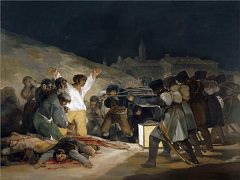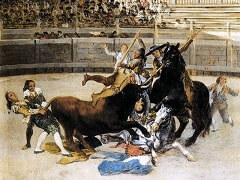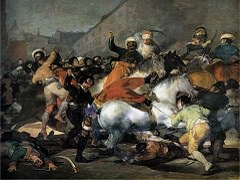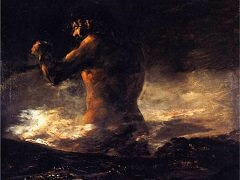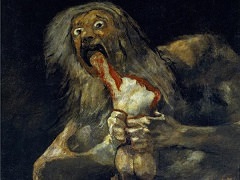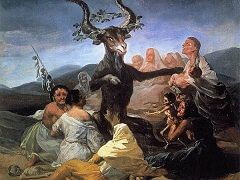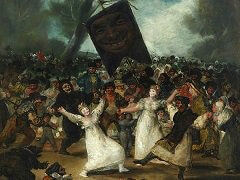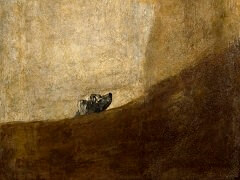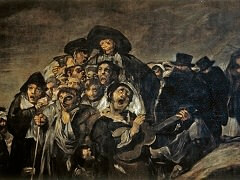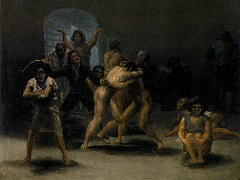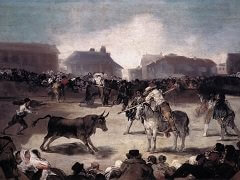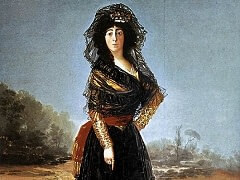Time and the Old Women, 1810 by Francisco Goya
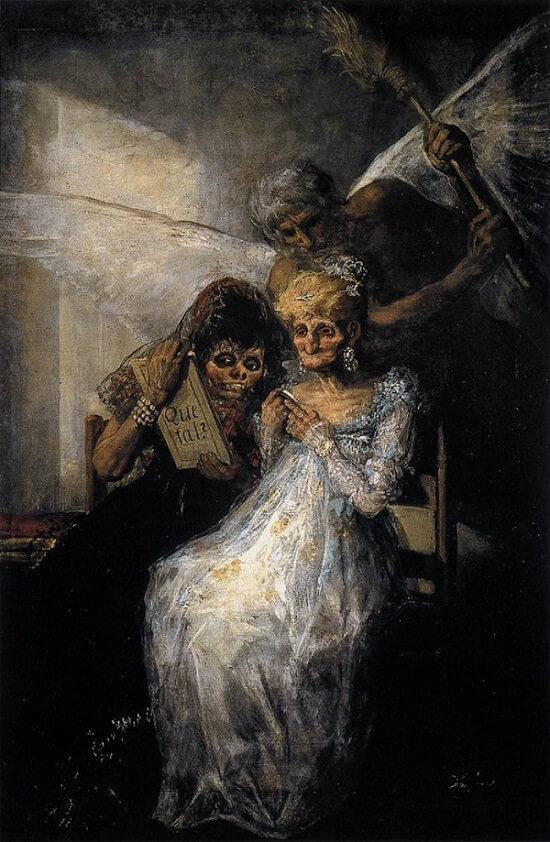
The mark 'X23' at the bottom of the canvas identifies this as a painting listed in 1812 in the inventory of paintings in Goya's house allocated to his son Javier. It probably hung next to one or other of two versions of Majas on a Balcony that bears the number X24. The painting of Les Jeunes or the Young Ones (A Woman Reading a Letter), long thought to have been a pendant and later sharing the same history, was possibly intended as such, although painted a year or two later.
Exceptional in its way as a life-size Capricho, the scale makes the satirical purport the more forceful. But though the general meaning is clear - the ridiculing of the pretentiousness and vanity of the rich and old and ugly - the exact message 'Que tal?' ('How goes it?') on the back of the mirror is not spelt out. A similar theme, without the figure of Time, which is the subject of Plate 55 of Los Caprichos, has lent itself to interpretation as a reference to the Dowager Duchess of Osuna, and also to Queen María Luisa, renowned for her vanity and her ugliness. In support of such an allusion, though the Queen had long since left Spain when this painting was made, one of these old women wears a diamond arrow similar to that worn by María Luisa in the group portrait of Charles IV and his Family.
Goya's son was no doubt referring to this and other paintings that Goya owned in 1812 when he wrote in one of his biographies of his father that Goya was specially interested in the paintings in his house 'because they were made with all the liberty that ownership affords; a liberty which led him in some cases to use the palette knife instead of the brush...and he particularly enjoyed seeing them every day'.

